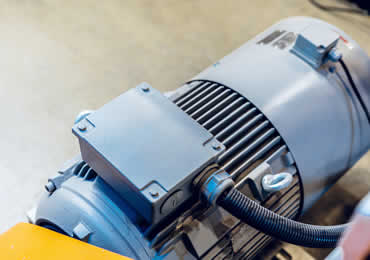Duck, dodge, roll, fire. They blast their way across the field toward the flag and your players are relying on every shot to count.
What’s the best choice then for your paintball air compressor?
What about flexibility? Cost? Reliability and ease of use?
There are a lot of things to consider when looking at HPA vs. CO2 propellant. Here’s a quick comparison of the two.
1. HPA Vs. CO2: Pressure and Velocity
The first question most paintball enthusiasts ask of their guns is what’s the velocity? Maximum safe velocity and typically standard close range velocity for most competitions is 300 fps. Sniper guns can get up to 500 fps, but those are generally limited to a minimum of 100 feet to target.
CO2 has one major downside when it comes to velocity. Temperature can affect velocity.
If the CO2 tank gets too hot, it can increase pressure. Increased pressure means higher velocity which can get you tossed out of a competition if you’re consistently overpowered.
If your CO2 tank gets too cold, the obverse is true. Your paintball velocity slows and your accuracy drops.
In essence, CO2 is a temperamental gas.
HPA, or high pressured air, doesn’t have this problem. The air you breath doesn’t expand and contract as significantly as CO2.
2. Ease of Use
If you want an efficient facility, ease of use is important to consider when evaluating HPA vs. CO2. You want your workers and operators able to quickly fill tanks and get players onto the field.
HPA is superior to CO2 in this regard. Filling CO2 takes time. You must fill CO2 part way, vent some, then continue filling. This allows the gas to cool so you get maximum volume.
You must repeat this process until you’ve filled your tank. This might take you a max of 2 minutes depending on outside temps.
If you’re running a facility for league play, you want quick and easy fills. Players will expect this for tournament play.
Thus, HPA is a simpler option. You merely connect a hose to the bottle’s nipple and fill for 15 seconds. You’re then done.
3. Expense and Durability
The biggest downsides to HPA are cost and mechanical complexity. While the process of filling is simple with HPA, the care and maintenance are not.
The initial investment is higher and the parts are expensive. It might be a better investment for small fields interested in amateur play to begin with a CO2 compressor.
If you’re renting guns, durability might be something you would want to consider. CO2 rapidly cools as it exits the tank. This means the o-rings inside the paintball marker will shrink and harden. This is an extra cost you would avoid if you invested in HPA guns and compressors.
Final Thoughts
If you’re running a professional facility HPA wins out when comparing HPA vs. CO2. But CO2 might be a cheaper alternative if you don’t care about ease of use or unpredictable velocity.
If you’re looking for a reliable compressor, check out our selection of breathing air compressors for paintball.

